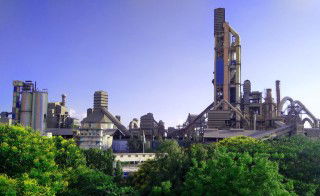Rebuilding aging ESPs can help to significantly improve their operational efficiency and bring dust emissions back in line with statutory requirements. By Rico Chen, Sasza Chyntara, Willy Stevanus and Nga Nguyen, Tai & Chyun Associates Industries, Taiwan, and Nguyen Kien Trung, Cong Thanh Group, Vietnam.
Despite its long history and the arrival of more advanced solutions, the electrostatic precipitator (ESP) is still considered to be one of the most efficient dedusting technologies available in the cement industry, removing 95-99 per cent of dust.
In many cement plants that employ ESP technology, the current equipment has been in operation for a minimum of 10 years. As the internal parts such as collecting plates and discharge electrodes generally deteriorate after 8-10 years of operation, ESP performance will decline and, if left unattended, the ESP will fail. To comply with stringent air pollution regulations put in place by governments, the cement plant will need to undergo an emergency shutdown resulting in production and financial losses as management tries to resolve the emissions issue.
